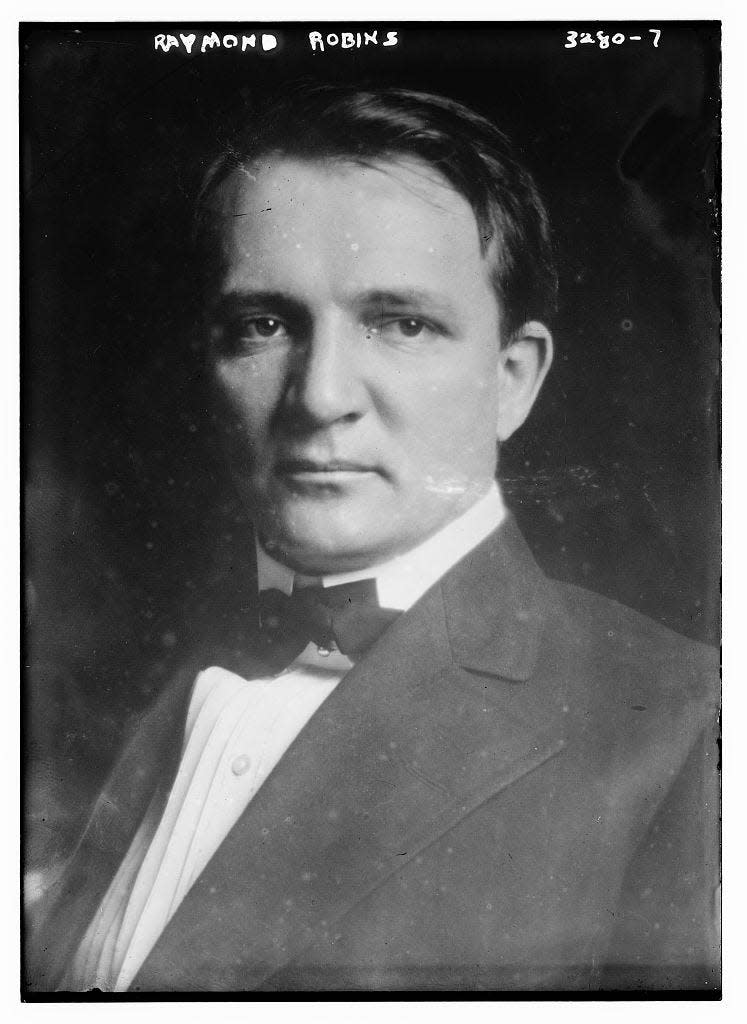Visiting Our Past: Amnesiac in the mountains made big news
Our public libraries now make available to us, online, The New York Times, 1851-2009.
Following New York eyes on the mountains, we unearth the mystery of 1932, which may still be familiar to some people in Swain County.
The disappearance of Col. Raymond Robins — prohibitionist, evangelical Christian, Teddy Roosevelt Republican and social aid provider to the Soviet Union — stirred up two months of speculation in the national press, as well as a lot of talk among the 400 residents of Whittier, where Robins was finally found, apparently the victim of amnesia.
Robins had been on his way from the City Club in Manhattan to a talk with President Herbert Hoover at the White House on Sept. 3, when he fell off the face of the Earth. Both liquor rings and Russian imperialists were suspected of kidnapping him.
Previously: Visiting Our Past: The history of our animal friends
More from Rob Neufeld: Visiting Our Past: Ramsey's 1962 lectures served up history with a gamey taste
Finally, Carl Byrd Fisher, a Whittier lad, identified him from a photo in the national newspaper Grit.

That's what certain Whittier residents argued, anyway. Others insisted the town barber had first recognized him; and some official accounts credited two federal agents.
Back of beyond
Robins "had always disliked crowds and had always been fond of getting away by himself and enjoying the solitude to be found in communing with nature," his nephew, John Dreier, told reporters after Robins was transferred to Appalachian Hall, an asylum in Kenilworth.
The story reminds us of the great outdoorsman, writer and National Park advocate Horace Kephart, who left his wife and kids to commune with nature in Swain County a generation earlier.
When told by Dr. Mark Griffin at Appalachian Hall that his wife was coming to see him, Robins, according to The New York Times, "begged him not to let her do so; saying she was not his wife." He didn't want to hurt her feelings.
Who was he then? He was Raymond Rogers, a mining engineer from Kentucky, he kept telling people, and he was looking for precious metals. He'd ditched his New York suit, donned overalls and a khaki shirt, and grown a beard.
It seemed like a regression to his life before marriage, for he'd spent his early childhood in Kentucky, started a phosphate mining company at age 17 and undergone a conversion to Christianity in Alaska, where he'd been a prospector during the Klondike gold rush in 1897.
It's me, Margaret
When Mrs. Robins arrived, it took three visits and a hand-holding before her husband looked at her and called her by her first name, Margaret.
There had been times in Chicago, the Robins family's hometown, Mrs. Robins and Dreier admitted, when Robins had donned workers' clothes and mingled with the laborers to know their thinking. Once, gangsters, allegedly hired by political opponents, slugged him and left him for dead.
But he had never before failed to tell his wife where he was going.
Robins' disappearance this time had preceded his wife's birthday by two days, yet it seems that his marriage to her was only one part of his need to detach himself from his life.
Visiting Our Past: Project recalls traditions, smells of family farms
Read this: Visiting Our Past: Judge Felix Alley corrected history, recounted tall tales
Before coming to New York, he had been recuperating at his summer home near Bar Harbor, Maine, after spending the previous year touring 286 cities making speeches in favor of Prohibition.
Once Robins recovered, hospital staff shaved his beard and gave him city clothes. Tabloid photographers were disappointed and offered big money for exclusive interviews and pre-shave photos of Robins.
Glenn McHan, son of the owner of the boarding house at which Robins had stayed, wanted $500 for a bearded photo of Robins that he had, but it was rejected because the sun had put Robins' face in the shade.
Tabloid writers tried to draw a lurid connection between Robins and McHan's 19-year-old sister, Wilma, who went on walks with Robins, but always with a group.
Upon full recovery, Robins returned to his social work and speech-making activities; and urged FDR to recognize the Soviet Union.
It was hard being effective; his amnesia incident would not be forgotten.
Then, in 1935, Robins fell from a tree and was paralyzed below the waist. He lived 19 more years, and died at age 81 of heart failure.

Rob Neufeld wrote the weekly "Visiting Our Past" column for the Citizen Times until his death in 2019. This column originally was published Aug. 19, 2013.
This article originally appeared on Asheville Citizen Times: Visiting Our Past: Amnesiac in the mountains made big news

